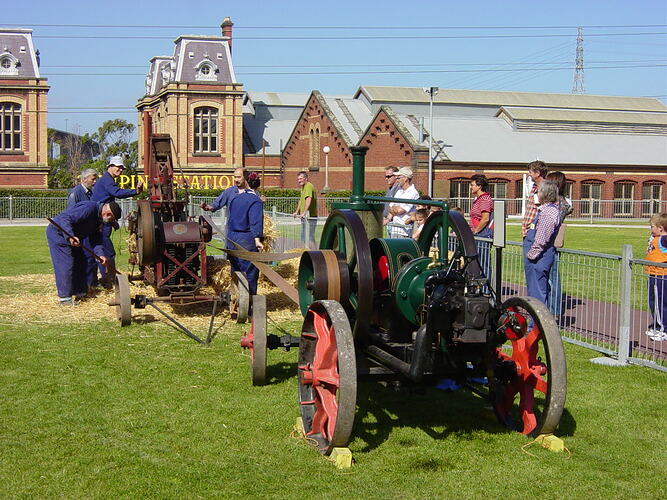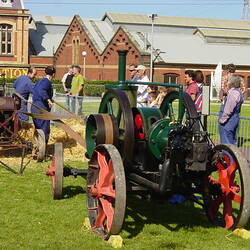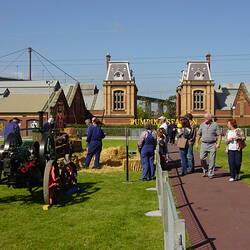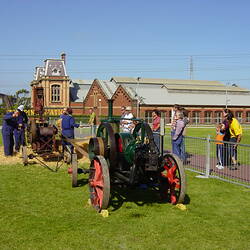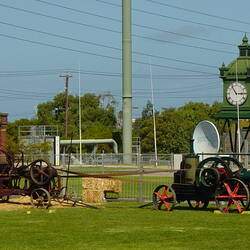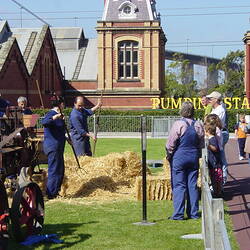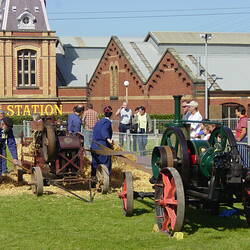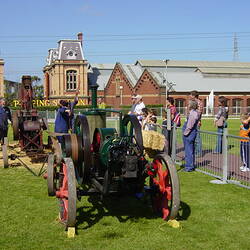Summary
'Austral' type single cylinder portable oil engine, rated at 6 horsepower, manufactured by Ronaldson Bros & Tippett, Ballarat, Victoria, serial No. 4946, circa 1923. The engine is designed to operate on power kerosene, after being started and warmed up using petrol.
This type of engine was used to power a variety of farm equipment such as saw benches and pumps. The Museum acquired this example from Mr Maurie Ohlsen, of Talbot, in 1985. It is activated to be used for public demonstrations at Scienceworks.
Physical Description
Single cylinder horizontal four-stroke portable internal combustion engine, with twin flywheels. Bore x Stoke: 6½ (165 mm) x 13 inch (330 mm) Fuel: petrol/kerosene. Carburation: twin bowl carburettor for starting on petrol which is displaced by kerosene during initial warm up. Induction on demand through poppet-valved chamber using governed hit & miss principle. Ignition: high tension magneto & hot-bulb Central governor: engine speed is controlled by an adjustable cam. Lubrication: drip feed oilers. Cooling: recirculating water pumped through cylinder block, exhaust cooling tower and return to tank. Power take-off. Flat belt pulley mounted on the main shaft. Weight: 2.2 tonne (44 cwt) approx.
Significance
Ronaldson Brothers & Tippett was established at Ballarat in 1905, through a partnership between Dave & Adam Ronaldson and Herbert John Tippett. Their famous 'Austral' kerosene engine was introduced in 1910 and quickly gained acceptance with Australian farmers. Within a decade they had become Australia's leading manufacturer of internal combustion engines.
This engine is typical of the many thousands of small internal combustion engines that drove machinery like chaff-cutters, saw benches, water pumps, shearing machines and electric generators on Australian farms during the first half of the 20th century.
More Information
-
Collecting Areas
-
Acquisition Information
Purchase
-
Manufacturer
Ronaldson Bros & Tippett Pty Ltd, Creswick Road, Ballarat, Victoria, Australia, circa 1923
-
Model Name or Number
-
Brand Names
Ronaldson-Tippett (Oil Engines) , 'Austral' (Kerosene Engines)
-
Classification
Mechanical engineering, Internal combustion power, Oil engines
-
Category
-
Discipline
-
Type of item
-
Overall Dimensions
2650 mm (Length), 1400 mm (Width), 1850 mm (Height), 2200 kg (Weight)
Weight is approximate only.
-
References
'Austral' Portable Kerosene Engine, information leaflet, Museum of Victoria, circa 1985.
-
Keywords
